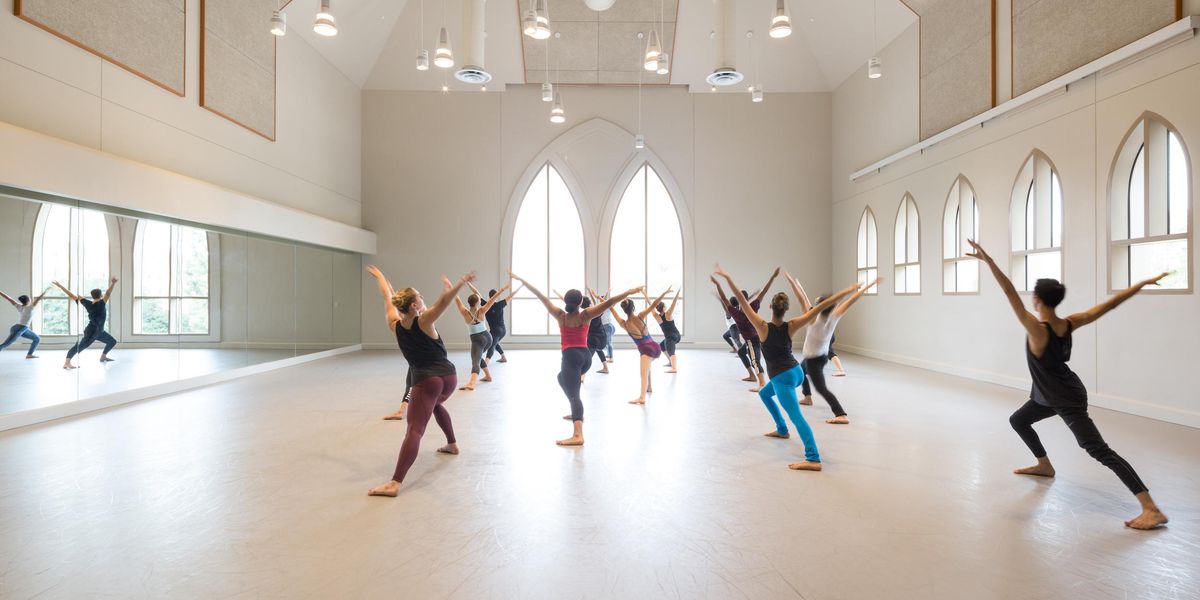On Broadway
Celebrating its 50th: The Public Theater created a new kind of dance musical.
When you think about the preeminent figures in our musical theater, producers don’t come to mind first. You might cite Florenz Ziegfeld, or George Abbott, or Harold Prince. Maybe David Merrick or Cameron Mackintosh. But the list is pretty thin, and there are reasons to argue about all of the above: Ziegfeld’s shows did little to advance the musical form itself; Abbott’s broke ground but quickly became formulaic; Prince’s most innovative musicals were financial duds; and the hits of Merrick and Mackintosh were geared unapologetically to popular taste.
But there is a producer whose shows managed to change both the form and the content of musicals and make scads of money at the same time. The Public Theater, which is celebrating its 50th anniversary this year, has had such a profound influence on the American theater in general that it’s easy to overlook the extraordinary impact it has had on musicals, and on dancing in musicals.
The Public, after all, was the birthplace of two dance landmarks, A Chorus Line and Bring in ‘Da Noise, Bring in ‘Da Funk, both of which will be duly celebrated at the Public’s birthday bash at City Center on January 30. From its very beginnings as The Shakespeare Workshop in 1956, the theater that Joseph Papp built (and that George Wolfe took over) was about breaking the rules: taking Shakespeare, the ultimate high-brow writer, to the gritty streets of New York, and casting the plays with American actors speaking in American accents. Soon called the New York Shakespeare Festival, its first musical, Hair, broke all the rules, too. And it wasn’t just because the performers were taking off their clothes. In 1967, Broadway was the home of four-square shows like Mame, Fiddler on the Roof, and Cabaret. Off-Broadway was not exactly taking chances either: The big-deal musical was Man of La Mancha—darker than most Broadway productions, but hardly pioneering.
With a free-form book, rocking score, and counterculture sass, Hair jolted musicals into the ’60s. And when it moved to Broadway the next year, it also signaled the beginning of the end of Broadway as the creative center of the American theater. With increasing frequency, not just new plays but new musicals as well would originate in the small non-commercial theaters established by Papp wannabes in New York neighborhoods and across the country.
By the time Michael Bennett came to Papp with the seeds of A Chorus Line in 1974, rock musicals were old news on Broadway. Conventional narrative strategies were being blown apart in shows like Company and Follies. And when Papp invited Bennett to grow his seeds at the Public, he revolutionized musicals further: The workshop became a fundamental tool in the creation of new shows.
A Chorus Line
put dancers at the forefront of the Broadway musical in ways that the great dance shows of Bob Fosse and Jerome Robbins couldn’t touch. Dance wasn’t just the medium for telling the story—it was the story. Musicals like Savion Glover’s Bring in ‘Da Noise, Susan Stroman’s Contact, and Twyla Tharp’s Movin’ Out might never have seen the light of day if not for the overwhelming success of A Chorus Line.
But there may be a bit of cloud attached to this silver lining, because the workshop is not necessarily the ideal method for developing shows that rely on dance. Obviously, it can work: it worked for A Chorus Line, and it worked for Contact. But most musicals today are not initiated by choreographers, as these were. And few producers are prepared to give them carte blanche, as the Public and Lincoln Center did. The workshop process is used to refine the raw material of a show, and often, that material consists of tunes, lyrics, and a story or a subject. Even if a choreographer is brought in at the very beginning, there’s no budget to fully explore the choreographic possibilities. One of the reasons so many new musicals look as though the choreography is an afterthought is that it was.
This, of course, could not have been foreseen back when Joseph Papp acted as midwife to A Chorus Line. Over time, the show earned some $150 million, which the Public plowed into other musical theater experiments—with singers like Linda Ronstadt and Rex Smith, writers like David Hare and Tony Kushner, choreographers like Savion Glover and Graciela Daniele. The record is extraordinary. The City Center bash was being billed as The Public Sings. But the Public also dances. Most of all, it produces. And what it has brought to the musical theater—for sheer impact—may just be unmatched in the history of the form.
Sylviane Gold has written about theater for
Newsday and The New York Times.




